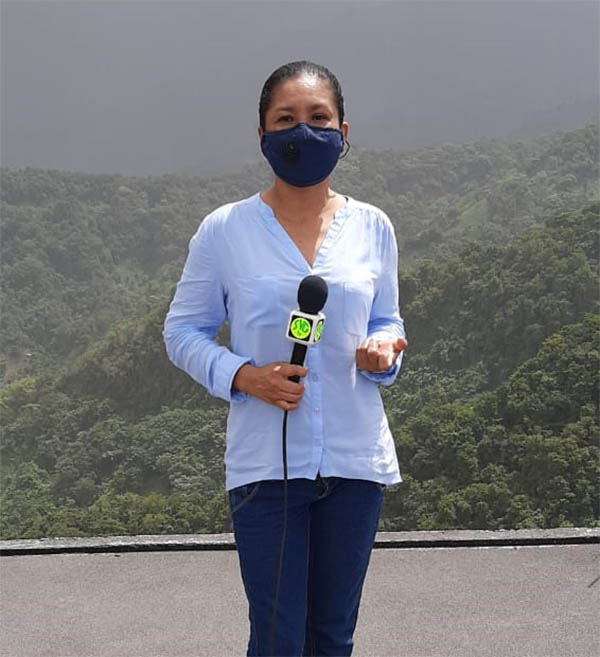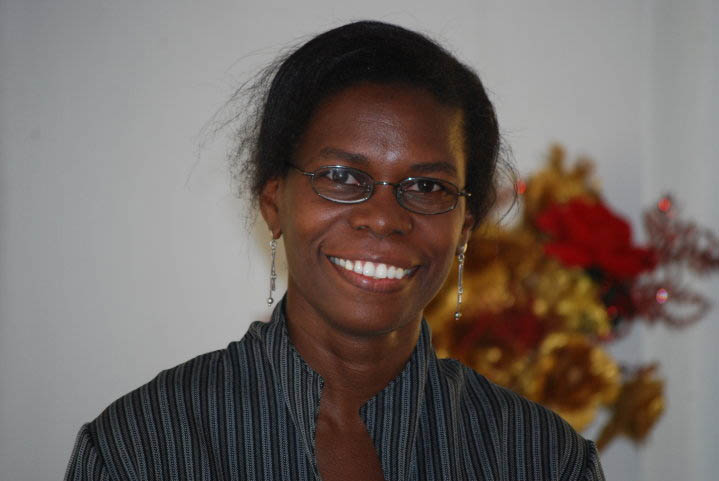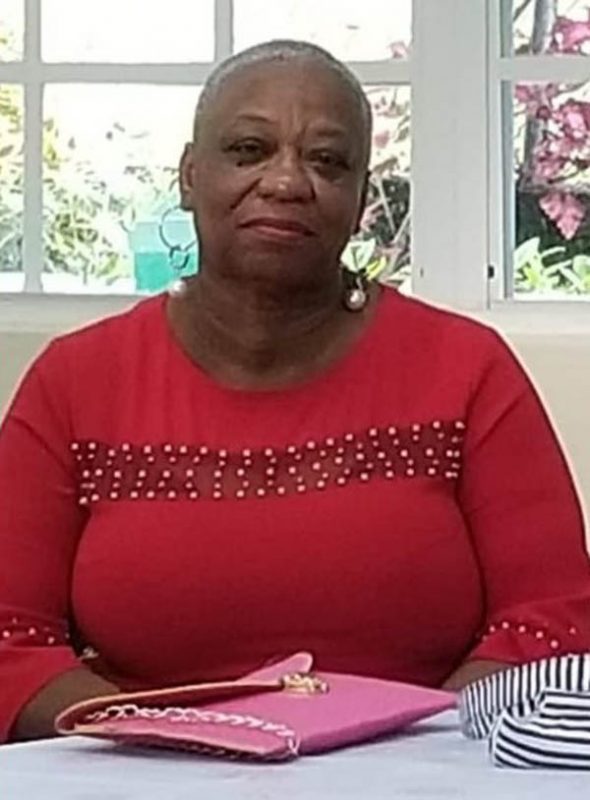Friday’s eruption of La Soufrière volcano in St Vincent has left some Guyanese in thrall and shock at the ash that has carpeted the island and they hope to ride out the crisis having stocked up on food, water and other supplies.
The Sunday Stabroek yesterday spoke with several Guyanese who have been residing in St Vincent and the Grenadines for a number of years on how they were coping.
The majority of them said that they reside in the safe zones but have been forced to remain confined to their homes for their own safety due to the continuous ash fall from the volcano.
They related that the build-up of the ash ranges from between 1 to 3 inches in their various communities.
Luckily, they said, they heeded advice from months ago and prepared by stocking up on food and water.
While electricity access has been stable so far, they said they have been out of water since Friday since the system was reportedly disconnected to facilitate testing to determine whether the water is contaminated.
As of yesterday, while the eruptions continued, they said they are severely affected by the effects of the ash.
“Everywhere is covered in ashes. Right now it is getting worse. From where I am we are still hearing the rumbling. I could imagine what it is like for those people who are closer,” Larissa Pugsley said.
Pugsley, who works as a TV reporter in St Vincent and the Grenadines, said that after the volcano first erupted on Friday, she and her team travelled to communities in the danger zone to get a firsthand look at what was happening.
“After it exploded, I was on my way to the communities in the danger zone. We were going through ashes. We are just driving through thick ashes. At some points the vehicle even broke down and the visibility was very poor. Getting the ash off the windscreen was very tough, it was thick as mud sometimes, so it took longer,” she explained.
For many, including Pugsley, this was the first time they were experiencing something of this nature.
Another Guyanese, Patricia Jones, who hails from Essequibo and works as a nurse in St Vincent, said while she and her family also reside in the safe zone, they have been facing the effects of the volcano.
“…Never experience this yet in my life, never… we got to keep indoor because the ash coming in the house… it’s very dangerous. We don’t know how long the water will last us, we have no idea. But we stock up on foodstuff and so forth,” Jones said.
“We just got to trust God…It is not looking good right now. We had to close down all the windows, doors and all around,” she added.
Everything covered
Meanwhile, Suruj Persaud said that due to her location, she was unable to witness the first eruption. However, she said the second eruption was “so high” that she was able to see it from her home, which is situated some 20 to 25 miles away.
“…That was an experience just to see it there. You wondering [at the] back of your mind that ashes up there have to come down somewhere and it will eventually come down,” Persaud said.
From Friday evening, Persaud said she and her family had been indoors. Yesterday morning, she said, they woke up to an “ashy” atmosphere.
“Everywhere is covered. It’s like when you think about snow and how it falls, this is like snow. Except maybe you would want to be outside if snow is there but this you do not want to…heavy, heavy ash. You can’t see, our visibility is very poor, and you don’t want to breathe it in,” Persaud said.
During yesterday, she noted that a few supermarkets opened their doors for about half of the day to allow persons to purchase needed items.
“….The kind of ash that is falling is not like a basic ash that is light and fluffy, it’s very high ash, [a] gravelly kind of ash……even when you sweep up you could see how heavy it is. So you just got to put that one side,” Persaud said.
Former weather forecaster and now secondary school teacher Sunita Ghir described her surroundings as a “ghost town”.
“As of this morning [Saturday] it is covered with very, very thick volcanic ash. I haven’t been outside. I am just looking through the window. It looks like a ghost town, like you looking at a movie where these abandoned houses are. That’s what it actually look like right now,” Ghir said.
Ghir, a Guyanese who has been living in St Vincent and the Grenadines for the past 14 years, said that this is her first experience with a volcanic eruption.
“While it was an amazing sight Friday to actually see the eruption, it was scary at the same time. But presently there is really nothing to see. The entire cloud is very thick…You really can’t see anything,” she noted.
Remained
Unlike the other Guyanese who are in the safe zones, Joylyn Dennis Lampkin and her husband are residing in the danger zone and they have opted to not heed the evacuation order.
Lampkin explained to the Sunday Stabroek that they made this decision because they own a farm, which provides them with food and water supplies.
“We have a natural farm and we are mindful of what we eating, so we prefer to stay close to the source of food supply as well as water access……So that is the reason why we remain in the orange zone…Water access, food supply,” she said.
“….In terms of water, we have no problem. In terms of food, we grow our own food. We live in a farming community. We are surrounded by producers of food, so we didn’t want to go somewhere where we couldn’t source food,” Lampkin added.
She also believes that it makes no difference to move since she said the entire country is facing the same experience.
“…The whole country is going through the same experience right now so moving from one place to the next wouldn’t make any difference. Where I am its dark and there is ashes flowing continuously like rainfall. Like snow falling….in the city is the same thing so it doesn’t make sense now to move and go somewhere else because everybody is going through the same experience,” Lampkin explained.
The only difference in her situation, she said, is that she is residing closer to the site where the volcano erupted and the effects are worse. “…..I can hear the rumbling much louder than other people. I hear rumbling continuously all the time….it doesn’t make sense for everybody to move at this point in time to any part of the country….the ash is the killer because you can’t open anywhere because even through our doors and windows are all sealed and locked up, you still have dust on the floor,” Lampkin added.
“Much bigger”
This eruption came decades after St Vincent and the Grenadines experienced its last one in 1979.
A News 784 report quoted geologist Richard Robertson saying that this eruption is likely to be “much bigger” than the previous one.
“So far indications are the 2021 eruption would more than likely be much bigger than the 1979 eruption, Robertson said, according to the report.
The Guyanese who spoke with Sunday Stabroek shared similar views. They said they were told that the 1979 eruption was much shorter than this one and of much less impact.
Unlike this one, ash only affected persons who lived in the danger zone in 1979, they said.
“The difference between the last time and now is that everywhere has ashes. And people are surprised, even people in the green zone who think they are safe. Everywhere there is ash and it’s continuous. It’s been falling since 2 o’clock yesterday (Friday),” Lampkin said.
She noted that this eruption appears to be more “prolonged”.
“…No one seems to know when it will finish. We just have to sit out and wait. The current dome was almost 10 times larger than the previous dome, hence more lava material to dispose of….It’s a question of some places have more ashes than others. Now where we are, we have about three inches of ashes outside that we have to walk in. It’s like cement. Like if you sprinkle the whole place with cement,” Lampkin added.
Meanwhile, Pugsley related that based on her understanding, residents are aware that persons were able to survive the previous eruption and therefore they have chosen to remain at their homes, even though they are located in the danger zone, thinking they will be able to do the same this time.









